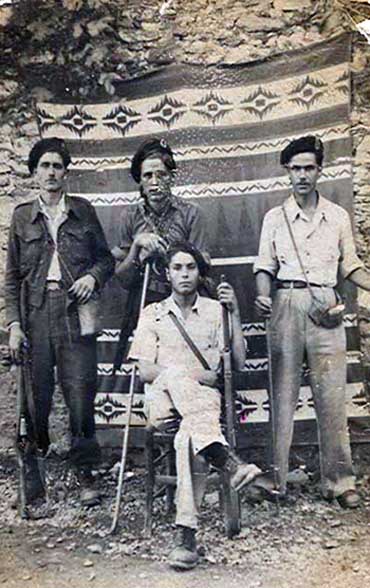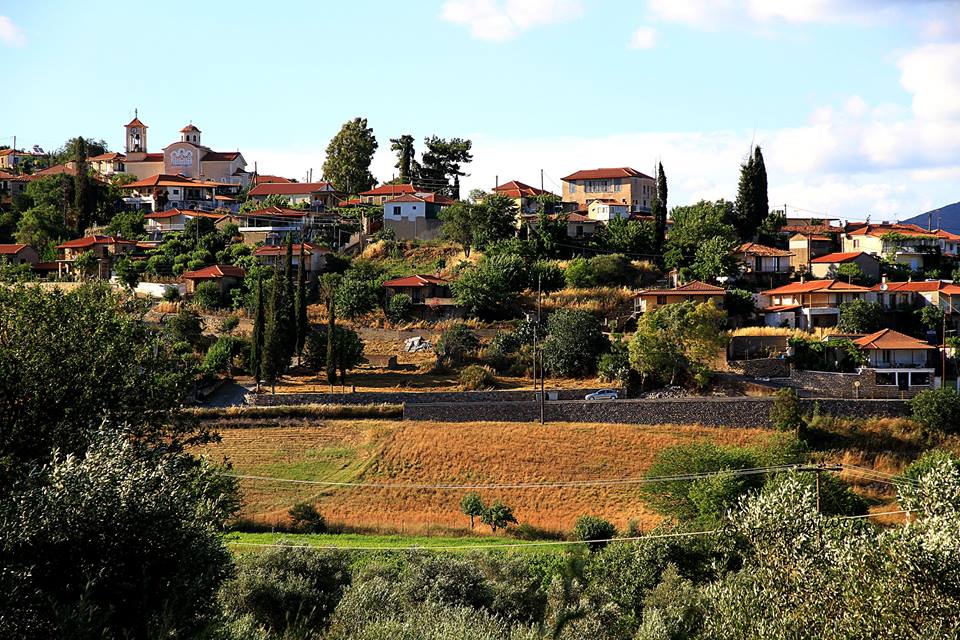Theodore Spyropoulos
(Greek: ΘεόδωροςΣπυρόπουλος) is a Greek archaeologist who is also a regional official of Greece’s Central Archaeological Council. He is well known in the Laconian district of Pellana where he is credited with uncovering the lost Homeric capital of Laconia.
Excavations at Pellana. Spyropoulos discovered an alternative site for the palace of Menelaus at Pellana located 25 kilometers north of Sparta. The site itself is near a series of large Mycenean chamber tombs. This has led Spyropoulos to believe that his excavations uncovered the lost Homeric capital of Laconia. The palace itself is 32 meters by 14 meters and is dated to around1200 BC. Cyclopean walls surround the palace and a wide road leads up to the entrance. During Antiquity, the tombs were all plundered. However, the palace was unscathed since it yielded jewelry, wall paintings, pottery, and a plethora of Linear B tablets. Currently, there exists a major clash of interpretation between Spyropoulos and members of theBritish School at Athens. The former believes that Pellana was the Mycenean capital of Laconia and the latter believe that the Menelaion was the capital.[3]
Excavations at Tanagra
At Tanagra, Spyropoulos began excavating a large Mycenaean cemetery in 1968. Every year up until Spyropoulos moved to the ephorate at Sparta, the excavation site yielded larnakes, pottery and terracottas. The chamber tombs uncovered were apparently in use from LH IIIA up until the end of LH IIIB and perhaps beyond.[1]
Excavations near Thebes
Near Thebes, Spyropoulos excavated the supposed tomb of Amphion and Zethus between 1971 and 1973. He identified the structure of the tomb as a step-pyramid or ziggurat built during the 3rd millennium BC.[2]
References
Burr and Morris, p. 109 (Sarah Immerwahr, “Death and the Tanagra Larnakes”). “Emily Vermeule in a brilliant article in the Journal of Hellenic Studies for 1965 called the attention of the scholarly world to an important new class of objects appearing on the art market. Although dealing with little more than a dozen examples, some of them fragmentary, and provided with a certain amount of rumor, she anticipated in a remarkably prescient way what was to be discovered at Tanagra when Theodore Spyropoulos opened his excavations of a Mycenaean cemetery there in 1968.
Continuing these excavations annually until he moved to the ephorate at Sparta, he tantalized Aegean archaeologists with his reports, and generously illustrated a number of the larnakes and some of the pottery and terracottas that were being unearthed in the chamber tombs of a vast cemetery that seems to have been in use from LH IIIA to the end of LH IIIB, and probably beyond.”
Fagan, p. 186 (Mary Lefkowitz, “Archaeology and the politics of origins, The search for pyramids in Greece”). “The other structure cited by Bernal as evidence of an Egyptian invasion also turns out not to be a real pyramid. This is the so-called tomb of Amphion and Zethus near Thebes, a prehistoric structure that was identified in historic times with the mythological twin sons of Zeus who were said to have built the walls of Thebes. Greek archaeologist Theodore Spyropoulos excavated this tomb in 1971-3 and identified the structure as a step-pyramid or ziggurat built in the third millennium BC.”
Castleden, pp. 16-17. “An alternative site for the Palace of Menelaus has recently been uncovered by Theodore Spyropoulos at Pellana, 25km north of Sparta. The alleged palace site is close to a series of large Mycenaean chamber tombs and Professor Spyropoulos believes that what he has found is ancient Lakedaimon, the lost Homeric capital. The principal building is 32m by 14m, apparently a palatial building on the same scale as the ‘palace’ at Mycenae. Associated finds date it to 1200 BC. Cyclopean walling protects it and a wide road leads up to the entrance.
The nearby tombs were plundered in antiquity, but not the ‘palace’, which has yielded pottery, jewellery, wall paintings and many Linear B tablets. There is a major clash of interpretation between Spyropoulos, who is convinced that Pellana was the Mycenaean capital of Laconia, and the British School at Athens, who believe that the Menelaion was the capital. The archive tablets at Pellana may help to resolve the issue.”
Sources
Carter, Jane Burr and Morris, Sarah P. The Ages of Homer: A Tribute to Emily Townsend Vermeule. University of Texas Press, 1995. ISBN 0-292-71208-1
Castleden, Rodney. Mycenaeans. Routledge, 2005. ISBN 0-415-24923-6
Fagan, Garrett G. Archaeological Fantasies: How pseudoarchaeology misrepresents the past and misleads the public. Routledge, 2006. ISBN 0-415-30593-4
Wikipedia, the free encyclopedia last modified on 7 January 2013
https://en.wikipedia.org/wiki/Theodore_Spyropoulos






